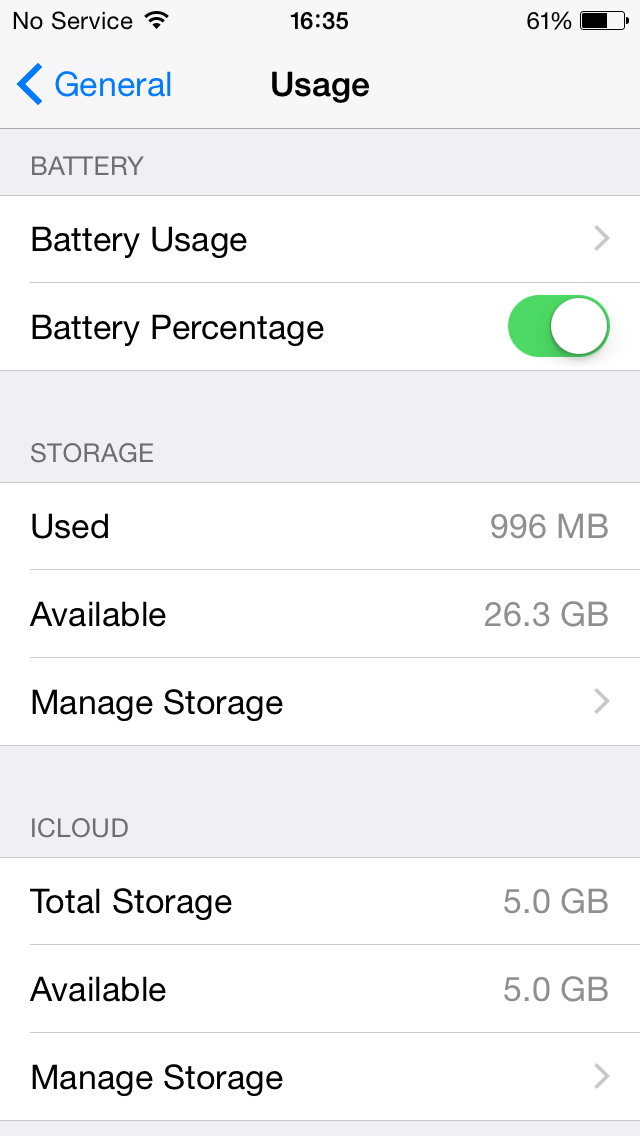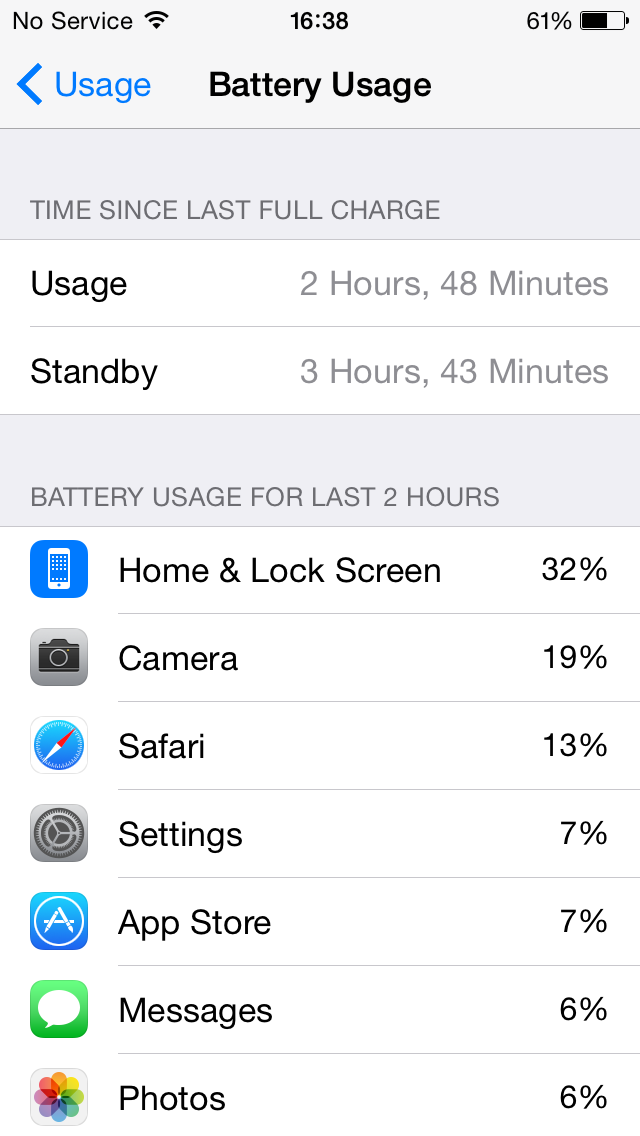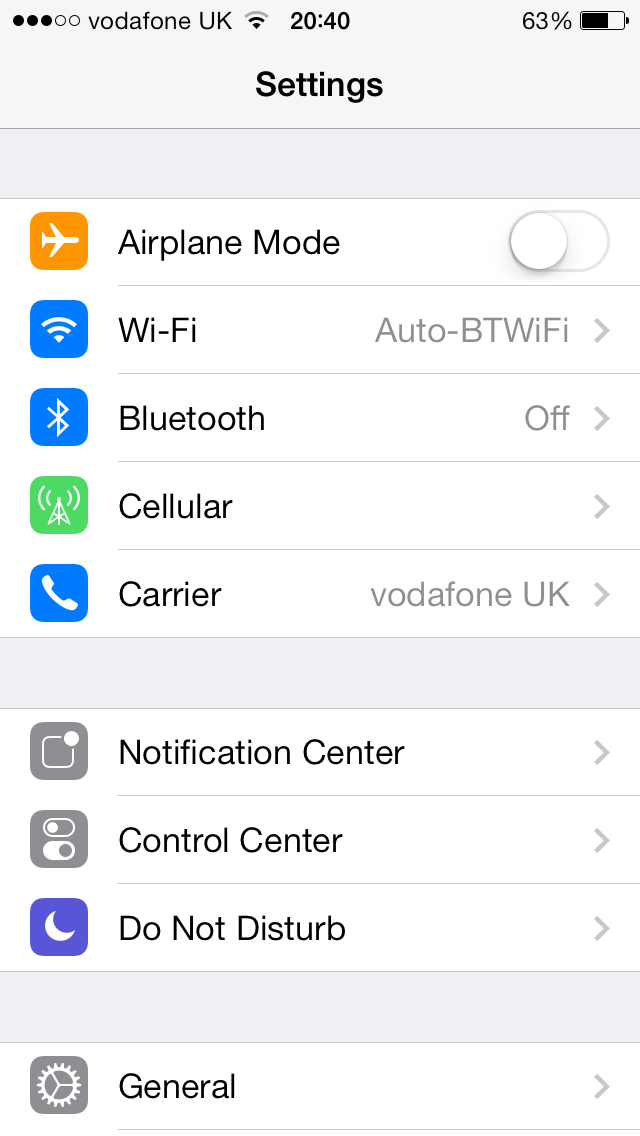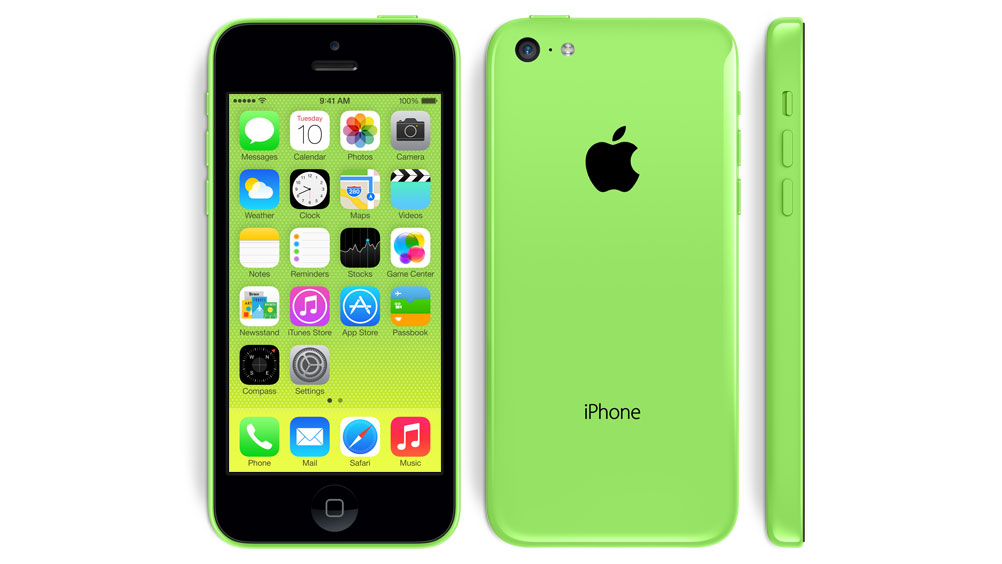Why you can trust TechRadar
Battery life
I'm not sure what size battery the iPhone 5C is hiding under that polycarbonate finish, but Apple assures us it's a bigger offering than the iPhone 5 - and I'm inclined to agree.

In short I've been pretty impressed with the battery performance on the iPhone 5C, it only drops 3% to 4% overnight with various accounts syncing throughout the downtime and with medium levels of usage it comfortably saw out a day.
Overnight drain has haunted past iPhones, but it looks like Apple may have managed to resolve the issue with the 5C.
Apple reckons you'll be able to eek out 10 hours video playback on the iPhone 5C or 40 hours of audio, the same as the iPhone 5, but these are best case scenarios.
You'll still need to plug in and recharge overnight, but if you're just using the phone for calls, texts, emails and a bit of web browsing you won't be caught short.
Of course if you fancy turning brightness up to full whack and then fire up some power-intensive games you'll see that battery drain pretty quickly, but the iPhone 5C still performs better here than the 5.
I took the iPhone 5C for a spin as a sat nav - a process which usually drains phone batteries in no time at all, but the two hour journey saw a drop of 30%.

That's pretty good considering it was constantly rendering maps, keeping a GPS lock, churning out voice commands and still syncing our various accounts in the background without the screen switching off.
With iOS 8 Apple has also added a "Battery Usage" screen which gives you a breakdown of exactly what is guzzling your power. It's a welcome addition that brings iOS up to date with Android and it helps identify power-hungry problem apps.
I ran a 90 minute HD video at full brightness on the iPhone 5C, with various accounts syncing in the background and it saw a drop of 26% in battery life.
That's a poorer performance than the iPhone 5S (16%), Samsung Galaxy S5 (16%) and LG G2 (7%) in the same test, while the HTC One Mini 2 dropped 29% and the HTC One lost 33%.
Connectivity
Unsurprisingly the iPhone 5C comes will all manner of connectivity options, but NFC is still the high-profile absentee at the Apple party. Not even a plastic clad smartphone could tempt the firm to give us a bit of contactless tech, though the iPhone 6 and iPhone 6 Plus do include it, but only for Apple Pay.
I've already spoken about the Wi-Fi a/b/g/n, 3G and 4G connectivity of the iPhone 5C in this review, with special mention of the latter as this phone supports more LTE bands than most other smartphones, allowing even more people to take advantage of the superfast network.

There's a new way to control Wi-Fi and Bluetooth 4.0 in iOS 7 with the arrival of the Control Center, which is accessed with a swipe up from the bottom of the screen.
This brings up some shortcut settings including toggles for both connections, plus you can also enable airplane mode here if you want to go off the grid - or, you know, if you get on a plane.
GPS and GLONASS also make an appearance to help you locate yourself in Maps with earth shattering accuracy and navigate you round the world with the free turn-by-turn satellite navigation system.
The iPhone 5C sports Apple's new physical connection port - dubbed Lightning - on its base which is used for charging as well as connecting to computers and any third party peripherals you may pick up.
It provides a faster connection than the 30-pin port it replaced, allowing for quicker data transfer meaning you won't be waiting around quite so long.
Apple offers its own cloud storage solution cunningly named iCloud which lets you store all your vital information in its secure servers should the worst happen to your iPhone 5C.
You can back up everything from contacts, mail and calendars to photos, documents and notes to iCloud, and if you've owned an iDevice in the past you can download your settings from that onto your iPhone 5C - saving you from having to re-enter various bits of information.
iCloud also enables the "Find my iPhone" feature, so if you were to misplace your 5C you can log onto the iCloud website and see where your phone is on a map.
Once located you have the choice of making play a sound so you can dig it out from behind the sofa, report it as lost or erase the contents of the phone - it's all very clear stuff.
iTunes
No longer is there a reliance in Apple's desktop iTunes software when you come to starting up your iPhone for the first time - no physical connection ever needs to made to a computer during the 5C's lifetime if you don't fancy digging out your Lightning cable.
If you do decide it's time for things to get physical between your computer and iPhone 5C then you'll need to make sure you've got the latest version of iTunes (that's version 11.1) installed, otherwise it will refuse to play with your new phone.
Why would you want/need to connect your iPhone 5C to your computer? Well perhaps you've got lots of music, movies and photos you want to transfer from your machine to your new phone - iTunes will pull it all in, churn it up and spit it out to your 5C in a useable format.
Using iTunes is a rather hit and miss experience, with the software performing far better on a Mac than a Windows PC, but either way it's usually a long, drawn out process which involves lots of syncing - so avoid it if you can or are tremendously regimented in your music organisation.

TechRadar's former Global Managing Editor, John has been a technology journalist for more than a decade, and over the years has built up a vast knowledge of the tech industry. He’s interviewed CEOs from some of the world’s biggest tech firms, visited their HQs, and appeared on live TV and radio, including Sky News, BBC News, BBC World News, Al Jazeera, LBC, and BBC Radio 4.
